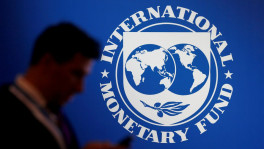Why politicians ignore disaster predictions
Experts see catastrophe on the horizon, but nobody wants to pay the costs beforehand

Disasters are often painted as events that come out of nowhere. But most disasters are predicted—at least by somebody. Disaster managers and researchers know what the biggest risks are and can imagine how they will play out. In part this is because many people, as you may have noticed, are really good at imagining bad things happening in excruciating detail. But more importantly, there are also large numbers of people who study seismology, epidemiology, meteorology, sociology, and other fields that deal with risk and disaster.
And it shows. Very often, a disaster has been imagined and modeled with striking accuracy long before it appears. Take the example of Hurricane Pam, a simulation exercise carried out in New Orleans almost exactly a year before Hurricane Katrina, which included most of the issues that the real storm would cause. Or this 2016 project by the Texas Tribune and ProPublica predicting the devastation that would be caused by Hurricane Harvey in 2017. Or the 2018 Palu earthquake.
It's true for pandemics, too. Scientists have known for at least a century, since the 1918 Spanish flu pandemic, about the risks of disease in a globalized world where a virus can leap from a village market to a metropolis on the other side of the world in days. The SARS and swine flu outbreaks reminded governments, nongovernmental organizations, and corporations to update their planning for managing and surviving epidemics. The U.S. Department of Health and Human Services had a series of exercises on a pandemic scenario earlier in 2019.
So if we know what to worry about, why are so many countries seemingly so poorly prepared to deal with disasters?
The first important answer is that many of these predictions do help— especially in the countries that take them seriously. The experience learned from SARS, MERS, and the swine flu left East Asian countries in general more capable of dealing with the coronavirus. The Hurricane Pam simulation demonstrated an awareness of what a hurricane would do to New Orleans, but it also highlighted problem areas that officials hadn't considered, such as the difficulty of evacuating people who didn't own cars. These weren't completely ignored; the Senate report on Katrina found that although the plans being developed from the Hurricane Pam exercise weren't finished in time for Katrina, "some officials took the initiative to use concepts developed in the drafts, with mixed success." The problem is not in knowing what to do, it's in doing it—and in the willingness to pay for it before it's too late.
Mostly, as the Hurricane Katrina example shows, it's doing it in a timely fashion. Because while we know quite a lot about probable disasters—where they will happen, what they will do, whom they will affect the most—what we don't know is when. We predict disasters in poorly understood probabilities or vague ranges on the order of decades or even centuries, such as the "500-year flood." That uncertainty has led decision-makers to postpone disaster preparedness, which studies have shown to have a significant return on investment in saved time and money during responses. Leaders can somewhat rationally hope that a predicted disaster will hit during someone else's tenure and put their budgets toward more visible objectives.
It's not just money, however. For many disasters, effectively preparing means making unpopular decisions: telling people they can't build or live in flood plains or on the coast, prioritizing wetlands over industry, restricting travel. An emergency manager from Kesennuma, Japan, where oil from fuel tanks at the port caused an immensely destructive fire in the wake of the 2011 tsunami, told me that not only had his jurisdiction ignored this risk, oil tanks continued to line the coast of Japan. Knowing how dangerous it was, the government was still reluctant to restrict that economic activity.
This is nowhere more obvious than in that epitome of predicted disasters, climate change. We know what we need to do, or stop doing, to address the threat, and yet we keep pretending that it's not our problem, that it can be left for later, that someone else—whether in another country or another generation—can make those necessary changes and pay the costs, in dollars and in discomfort. One study shows that $1 spent on preparedness mitigates an average of $15 worth of damage later — but that voters will reward spending on disaster mitigation, but not disaster preparedness.
That's happened with wave after wave of the COVID-19 pandemic: Even after seeing it happening elsewhere, even with the rational understanding that countries needed to act before they felt the impact, there were still delays and reluctance.
Our reluctance to believe in disasters is worsened by the way we treat each one, after the fact, as the only disaster. Government reports and media accounts alike are studded with words like unprecedented and unimaginable. Those reports supposedly have the purpose of learning from mistakes (and, more rarely, successes) to ensure that future disasters are handled more effectively. But, like simulation exercises and probabilities, those carefully documented lessons are rarely given the funding or political attention to be put into practice. After a disaster people are more likely to heave a sigh of relief and slide back into normalcy, forgetting those whose lives continue to be affected by the aftermath. And yet, the United Nations Office for Disaster Risk Reduction has found that "general acceptance for disaster risk reduction and recovery planning peaks after the disaster." That is the brief window when we are convinced that devastating upheaval is possible and could happen to us.
We know that disasters will happen. We even know how and where. Let's demand that our political leaders start putting that knowledge to good use.
Malka Older is an affiliated research fellow at the Center for the Sociology of Organizations at Sciences Po. She is the author of an acclaimed trilogy of science fiction political thrillers, beginning with Infomocracy, and a new collection of of short fiction and poetry, ...and Other Disasters.
Disclaimer: This article first appeared on Foreign Policy, and is published by special syndication arrangement.


 Keep updated, follow The Business Standard's Google news channel
Keep updated, follow The Business Standard's Google news channel
















